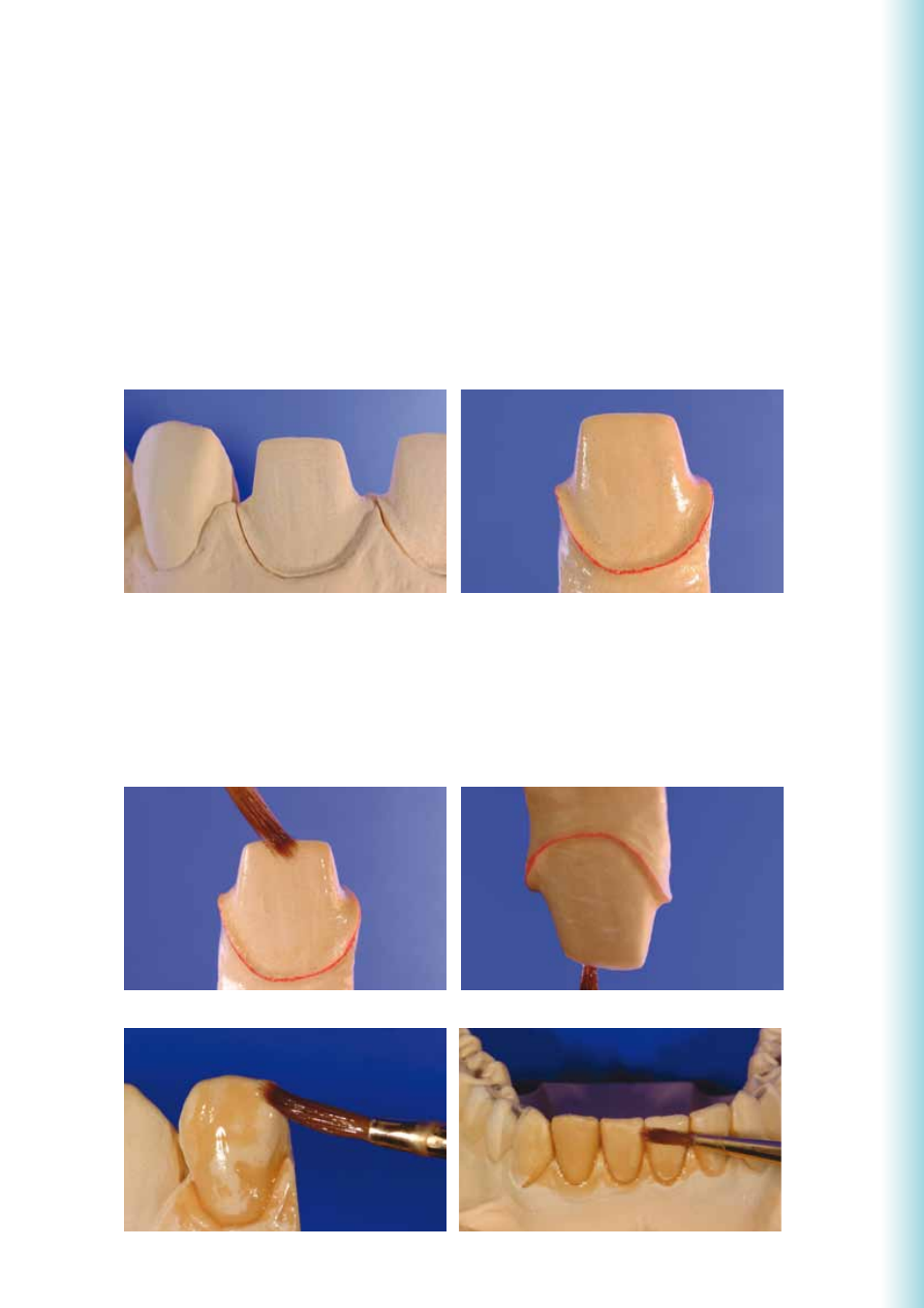Sr adoro step by step starting situation, Sealing the die and adjoining parts of the model – Ivoclar Vivadent SR Adoro User Manual
Page 25

25
Practical
Pr
ocedur
e
for
Framework-Fr
ee
Restorations
(Anterior
Cr
owns)
SR Adoro Step by Step
Starting Situation
Fabricate a master model or a model with detachable segments according to the impression in the usual manner. Expose
and mark the preparation margin. Block out undercuts with blocking out wax or block out resin to ensure that the
restoration can be removed after the polymerization / tempering process without damaging the die. Basically, the applica-
tion of a sealer is recommended to harden the surface and to protect the stone die. However, the sealer layer must not
result in any changes of the dimensions of the stone die. It is not mandatory to utilize a spacer, as two coats of SR Model
Separator will be applied. If you use a spacer, check as to whether it is compatible with SR Model Separator.
A master model is used as the working model.
Fabrication of a working model with removable segments. The die is coated with sealer.
Sealing the Die and Adjoining Parts of the Model
SR Model Separator is applied in two coats. Apply the first coat generously and make sure that all areas of the die are well
covered. Watch out for sharp edges (incisal edges) in particular. Allow the layer to react for 3 minutes. After the reaction
time, apply a second layer in a thin coat, invert the model, and allow to dry for 3 minutes. Additionally, apply SR Model
Separator to adjoining model surfaces (including counterbite), allow to react for a short time, and then disperse excess
material with oil-free compressed air.
Apply first coat of SR Model Separator generously, pay special attention to the incisal edges,
and allow to react for 3 minutes.
Apply second layer of SR Model Separator in a thin coating and allow to dry for 3 minutes in
an upside down position.
Isolate adjoining model parts, as well as neighbouring teeth and counterbite.
